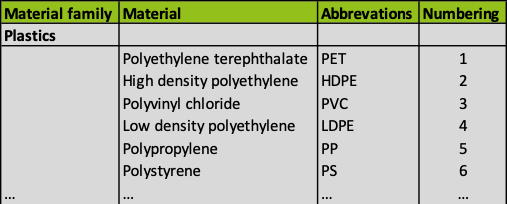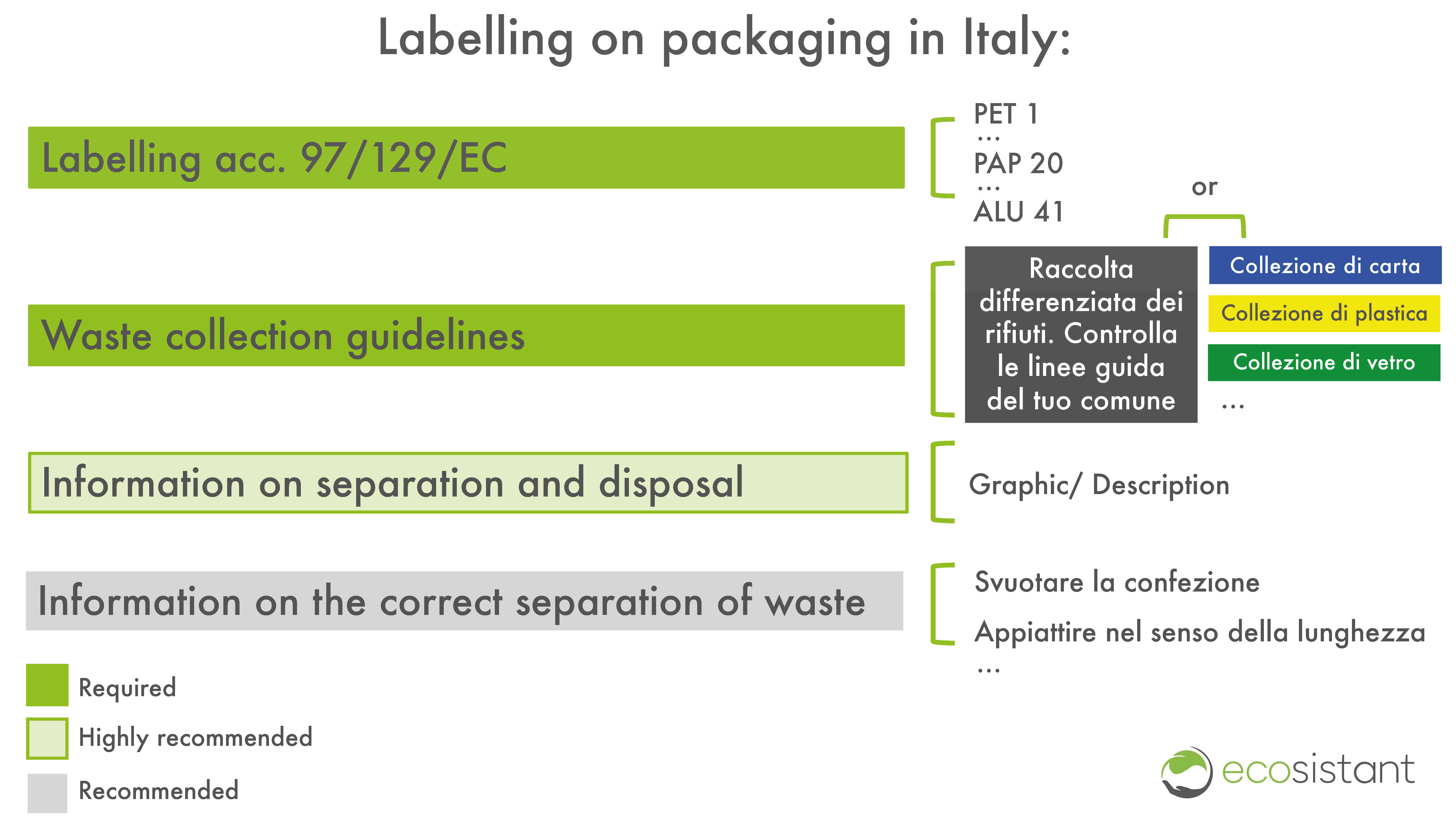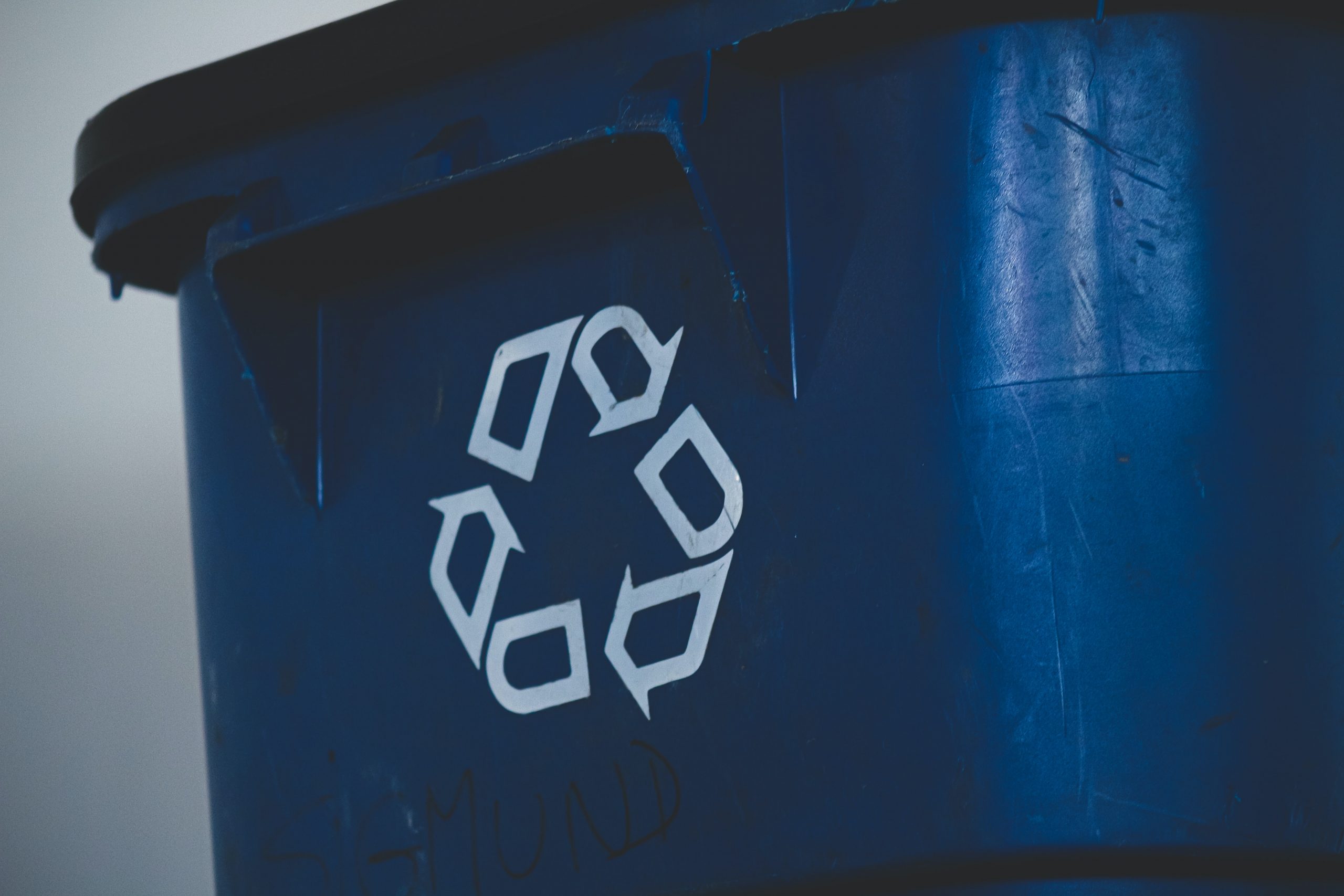The packaging law in Italy imposes a strict labelling obligation. Online retailers are obliged to label packaging that they place on the market in Italy. The environmental labelling standards must be complied with. In this article we explain what to look out for when making deliveries to Italy.
You can also checkout our YouTube Video for more Information according the Italian packaging law:

Mit dem Laden des Videos akzeptieren Sie die Datenschutzerklärung von YouTube.
Mehr erfahren
Obligation for environmental labelling of packaging in Italy
Decree No. 116 of 3 September 2020 obliges actors along the supply chain to label packaging materials.
In short, it makes environmental labelling mandatory on all packaging in Italy. The aim of the decree is to reduce the impact of packaging and packaging waste on the environment. At the same time, it aims to ensure a certain level of environmental protection.
Click here for a detailed interpretation of the amended law.
There are two specific obligations for environmental labelling in Italy
First obligation
Producers must indicate the material of the packaging. The alphanumeric code according to Decision 97/129/EC shall be used for this purpose.

Second obligation
Packaging intended for end consumers must be clearly labelled with appropriate instructions for disposal. The notes must be written in Italian. Exactly what these instructions should look like has not yet been defined.
The Italian Consortium of Packaging Materials (CONAI) makes the following suggestions for labelling:
- “Separate waste collection. Check your local municipal guidelines” or “Raccolta differenziata. Verifica le disposizioni del tuo Comune” OR
- Information on packaging collection according to the format “[Material] Collection” (e.g. “Plastic Collection” or “raccolta plastica“)
Recommendations
In addition, there is a recommendation on the labelling of multiple-component packaging. The Italian packaging law recommends here to help the end user how to separate and dispose of individual parts. Whether this is done by using a graphic or a short text is optional. In this case, too, the text must be written in Italian.
Another recommendation is information on the correct separation of waste, such as “Empty the packaging” or “Svuotare l’imballaggio“.

What should be considered when labelling packaging in Italy?
If packagings consist of several materials but the secondary material is less than 5% of their weight, they are classified as single-material packagings. Then they are labelled according to the predominant material by weight. The 5% rule is relevant when using printing ink or glue, for example.
If the size of the packaging is too small to put the information on each material, there is another solution. In such cases, the identification code can be placed on the main part of the packaging.
Are there differences in the labelling of packaging for B2B and B2C in Italy?
The alphanumeric code for the identification of the packaging material must be applied to both B2B and B2C packaging. However, there are differences between B2B and B2C when it comes to the information for the correct disposal of the packaging.
Packaging intended for final customers must contain this information. Packaging intended for other businesses is exempt from this information obligation.
Who is affected by the obligation for environmental labelling?
The decree stipulates that producers are obliged to label. The decree defines producers as “suppliers of packaging materials, manufacturers, processors and importers of empty packaging and packaging materials”.
What are the labelling requirements for online traders in Italy?
Anyone who puts packaging on the market that is not properly labelled can be held accountable. In the case of incorrect or missing labelling, fines of 5,200 – 40,000€ can be imposed. The obligation is directed not only at manufacturers but also at traders and distributors. But also fillers, users of packaging and importers of filled packaging are to be held responsible.
In short: The legislative decree is intended to bring about a joint responsibility of all actors along the supply chain.
CONAI provides the tool e-tichetta. Online traders can register there and have their eco-labels created individually. Currently, however, this service only exists in Italian.
What are the transition periods?
Originally from 01.01.2022, packaging must be marked with the alphanumeric code so that the material can be identified. Information on correct disposal must also be provided on packaging by then. This deadline has in the meantime been extended by 12 months to 01.01.2023.
Packaging that is already in circulation may continue to be distributed without the new labelling. However, this exemption only applies until this already existing stock is used up.
Meeting sustainability compliance in Italy
In addition to the use of identification codes and disposal instructions, the type and quantity of packaging must be reported in Italy.
For ecosistant customers, there are individual instructions on how online retailers can sell their products in Italy in compliance with the law.
ecosistant customers can find out exactly how this works and how much this environmental levy costs online traders in the Italy dashboard or in our digital EPR Service.
If you need more support we even create your packaging labels according to alle obligations in Italy – and all other European Countries – individually for you.
